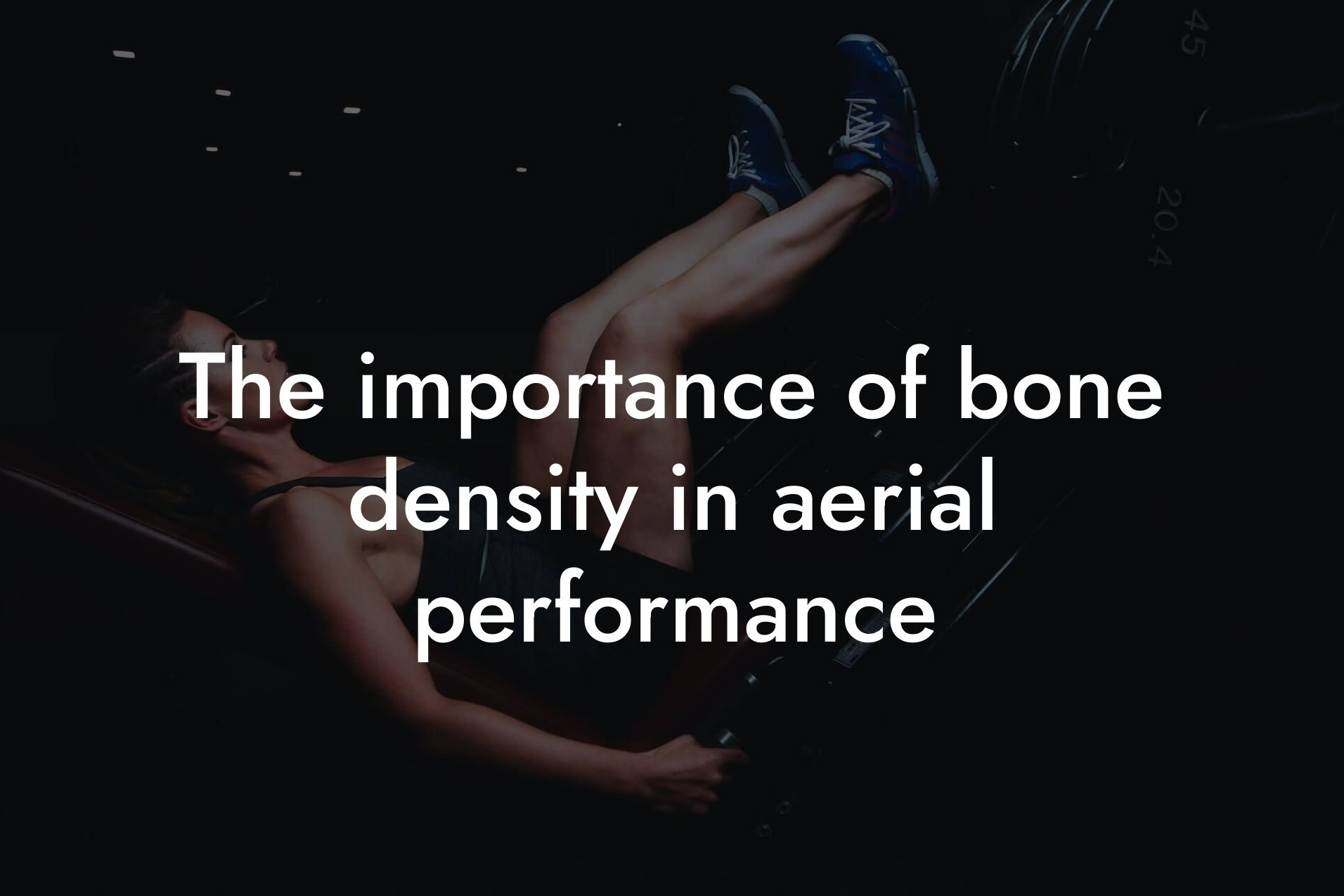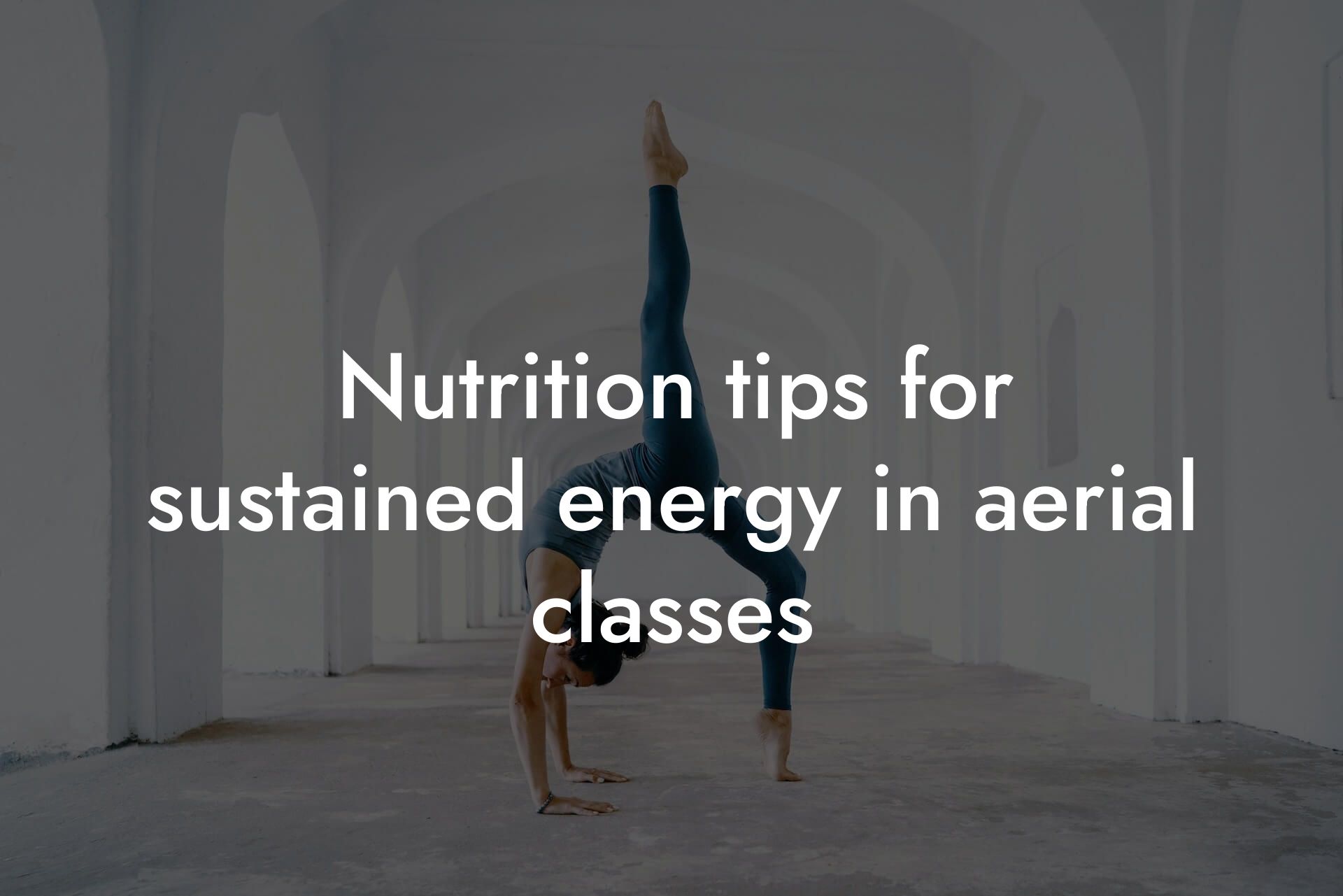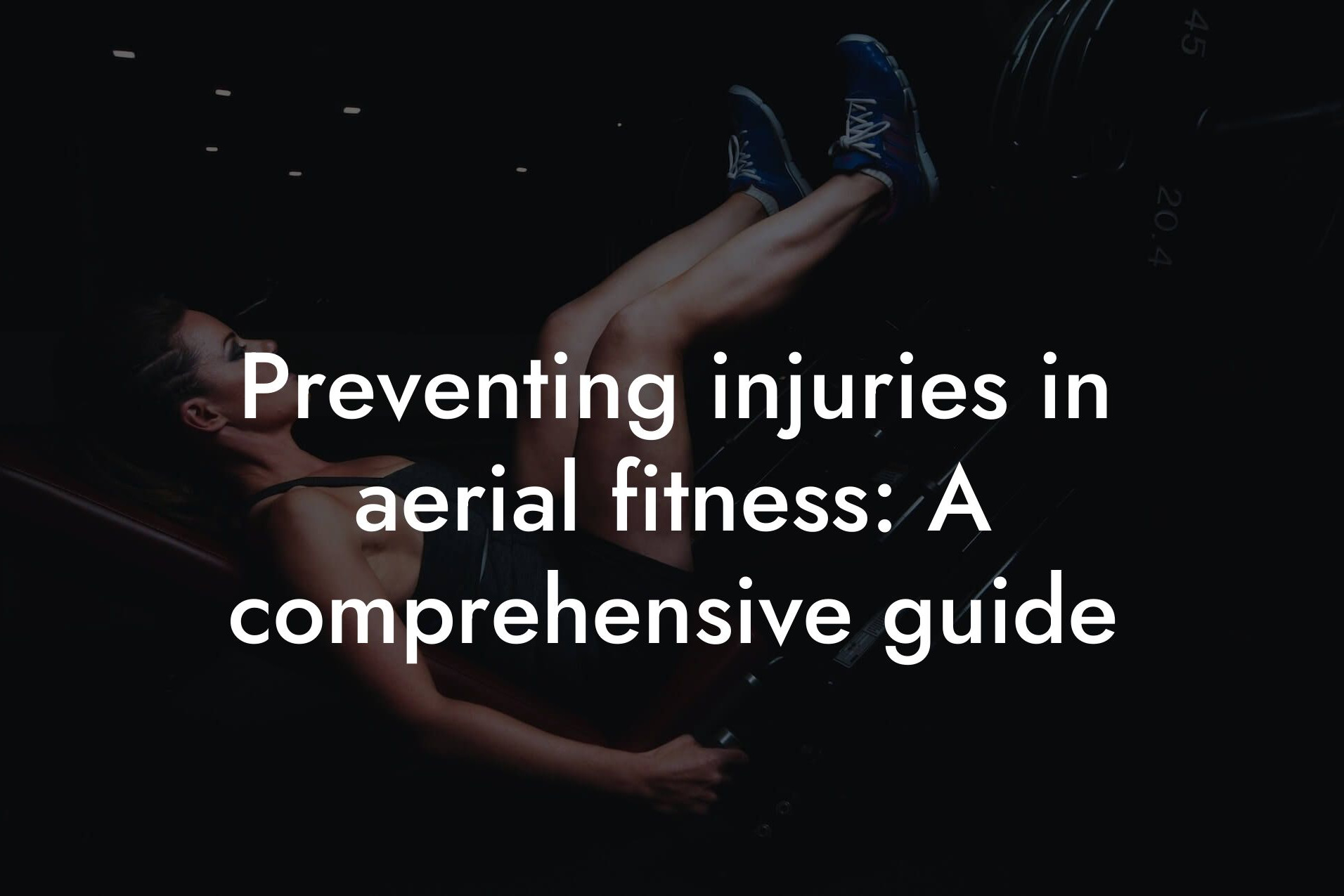What is Aerial Training?
Aerial training, also known as aerial fitness or aerial yoga, is a form of exercise that combines traditional yoga poses, Pilates, and dance with the use of aerial equipment such as silk hammocks, swings, or trapezes. This unique approach to fitness provides a low-impact, full-body workout that can improve flexibility, strength, and overall physical fitness. Aerial training has gained popularity among fitness enthusiasts and athletes due to its ability to improve muscle recovery, reduce injury risk, and enhance overall physical performance.
Table of Contents
- What is Aerial Training?
- The Importance of Muscle Recovery
- How Aerial Training Enhances Muscle Recovery
- Incorporating Aerial Training into Your Workout Routine
- Benefits of Aerial Training for Muscle Recovery
- Combining Aerial Training with Other Recovery Techniques
- Monitoring Progress and Adjusting Your Routine
- Frequently Asked Questions
The Importance of Muscle Recovery
Muscle recovery is a critical component of any exercise routine. When you engage in physical activity, your muscles undergo micro-tears, which can lead to muscle soreness and fatigue. Proper recovery is essential to repair and rebuild muscle tissue, preventing injuries and improving overall performance. Without adequate recovery, you may experience decreased strength, reduced endurance, and increased risk of injury.
How Aerial Training Enhances Muscle Recovery
Aerial training offers several benefits that can enhance muscle recovery. The low-impact nature of aerial exercises reduces the risk of muscle strain and injury, allowing your body to recover more efficiently. Additionally, the gentle, flowing movements involved in aerial training can help to increase blood flow and reduce inflammation, promoting faster recovery. The use of aerial equipment also provides support and traction, which can help to reduce muscle tension and improve flexibility.
Incorporating Aerial Training into Your Workout Routine
To incorporate aerial training into your workout routine, start by finding a qualified instructor or studio that offers aerial classes. Begin with beginner-friendly classes and gradually progress to more advanced levels as you build strength, flexibility, and confidence. Aim to practice aerial training 2-3 times per week, allowing for at least one day of rest in between sessions.
Benefits of Aerial Training for Muscle Recovery
Aerial training offers several benefits that can enhance muscle recovery, including:
- Reduced muscle soreness: The low-impact nature of aerial exercises reduces the risk of muscle strain and injury, leading to reduced muscle soreness.
- Improved flexibility: Aerial training helps to increase flexibility and range of motion, reducing muscle tension and improving overall mobility.
- Enhanced circulation: The gentle, flowing movements involved in aerial training can help to increase blood flow and reduce inflammation, promoting faster recovery.
- Increased strength: Aerial training can help to build strength and endurance, reducing the risk of injury and improving overall physical performance.
Combining Aerial Training with Other Recovery Techniques
To further enhance muscle recovery, consider combining aerial training with other recovery techniques, such as:
- Stretching and foam rolling: Incorporating stretching and foam rolling into your routine can help to reduce muscle tension and improve flexibility.
- Massage therapy: Regular massage can help to reduce muscle soreness and improve circulation, promoting faster recovery.
- Cold therapy: Applying cold temperatures to affected areas can help to reduce inflammation and promote recovery.
- Proper nutrition: Fueling your body with a balanced diet that includes protein, complex carbohydrates, and healthy fats can help to support muscle recovery.
Monitoring Progress and Adjusting Your Routine
To ensure optimal muscle recovery, it's essential to monitor your progress and adjust your routine as needed. Pay attention to your body and take rest days as needed. Use tools such as DEXA scans to track changes in body composition and muscle mass, and adjust your workout routine accordingly.
Maintaining muscle recovery is crucial for optimal physical performance and overall health. Aerial training offers a unique and effective way to enhance muscle recovery, reduce injury risk, and improve overall physical fitness. By incorporating aerial training into your workout routine and combining it with other recovery techniques, you can optimize your muscle recovery and take your fitness to the next level.
Frequently Asked Questions
What is aerial training and how does it relate to muscle recovery?
Aerial training refers to a form of exercise that involves performing aerial movements and poses while suspended in the air using equipment such as silks, swings, or trapezes. This type of training can be beneficial for muscle recovery as it allows for low-impact, gentle movements that can help reduce muscle soreness and improve flexibility.
How does aerial training differ from traditional forms of exercise?
Aerial training is unique in that it allows for a range of motion that is not possible with traditional forms of exercise. The suspension in the air reduces the impact on joints, making it an ideal option for those who are recovering from injuries or experiencing chronic pain. Additionally, aerial training engages the core and stabilizer muscles, which can help improve overall strength and stability.
What are the benefits of incorporating aerial training into my workout routine?
Incorporating aerial training into your workout routine can have numerous benefits, including improved flexibility, increased strength, and enhanced muscle recovery. Aerial training can also help reduce stress and anxiety, improve body awareness, and increase confidence.
Is aerial training suitable for beginners?
Absolutely! Aerial training is suitable for individuals of all fitness levels, including beginners. Our experienced instructors will guide you through each movement, ensuring that you are comfortable and confident throughout the class.
Do I need to have prior experience with aerial training to participate?
No prior experience is necessary to participate in aerial training. Our classes are designed to accommodate individuals of all skill levels, and our instructors will provide guidance and support throughout the class.
What should I wear to an aerial training class?
We recommend wearing comfortable, stretchy clothing that allows for a full range of motion. Avoid wearing anything too loose or baggy, as it may get in the way of the equipment. You should also remove any jewelry or accessories that may interfere with the equipment or pose a safety risk.
What is the ideal frequency for incorporating aerial training into my workout routine?
The ideal frequency for incorporating aerial training into your workout routine will depend on your individual goals and fitness level. As a general rule, we recommend incorporating aerial training 2-3 times per week, allowing for at least one day of rest in between sessions.
How does aerial training improve muscle recovery?
Aerial training improves muscle recovery by reducing muscle soreness, improving flexibility, and increasing blood flow to the affected areas. The gentle, low-impact movements involved in aerial training can also help reduce inflammation and promote relaxation.
Can aerial training help with injury rehabilitation?
Yes, aerial training can be a valuable tool in injury rehabilitation. The low-impact, gentle movements involved in aerial training can help improve range of motion, strength, and flexibility, all of which are essential for injury rehabilitation. Additionally, aerial training can help reduce pain and inflammation, promoting a faster and more effective recovery.
How does aerial training compare to other forms of exercise in terms of muscle recovery?
Aerial training is unique in its ability to provide a low-impact, gentle workout that can help improve muscle recovery. While other forms of exercise, such as yoga or Pilates, may also be beneficial for muscle recovery, aerial training offers a distinct advantage in terms of its ability to reduce muscle soreness and improve flexibility.
Can aerial training be modified to accommodate different fitness levels?
Absolutely! Aerial training can be modified to accommodate different fitness levels. Our experienced instructors will work with you to develop a personalized workout plan that meets your individual needs and goals.
How does aerial training impact bone density?
Aerial training can have a positive impact on bone density by promoting weight-bearing activities and resistance exercises. The gentle, low-impact movements involved in aerial training can also help reduce the risk of osteoporosis and fractures.
Can aerial training help with weight loss?
Yes, aerial training can be a valuable tool in weight loss. The combination of cardiovascular exercise and strength training involved in aerial training can help increase caloric burn and promote weight loss.
How does aerial training impact body fat percentage?
Aerial training can help reduce body fat percentage by promoting a combination of cardiovascular exercise and strength training. The increased caloric burn and muscle mass gained through aerial training can help reduce body fat percentage and improve overall physique.
Can aerial training be used as a form of active recovery?
Absolutely! Aerial training can be used as a form of active recovery, allowing you to continue exercising while still allowing your muscles to recover. The low-impact, gentle movements involved in aerial training make it an ideal option for active recovery.
How does aerial training impact mental health?
Aerial training can have a positive impact on mental health by reducing stress and anxiety, improving mood, and increasing self-confidence. The sense of accomplishment and empowerment that comes with mastering aerial movements can also have a profound impact on mental health.
Can aerial training be used in conjunction with other forms of exercise?
Absolutely! Aerial training can be used in conjunction with other forms of exercise, such as strength training, cardio, or yoga. In fact, incorporating aerial training into your workout routine can help improve overall fitness and enhance the benefits of other forms of exercise.
How does aerial training impact flexibility and range of motion?
Aerial training can have a profound impact on flexibility and range of motion by promoting gentle, low-impact movements that increase flexibility and reduce stiffness. The suspension in the air also allows for a greater range of motion, making it an ideal option for improving flexibility and range of motion.
Can aerial training be used to improve posture?
Absolutely! Aerial training can be used to improve posture by strengthening the core and stabilizer muscles, which are essential for maintaining good posture. The gentle, low-impact movements involved in aerial training can also help improve flexibility and reduce muscle tension, both of which can contribute to improved posture.
How does aerial training impact overall physical fitness?
Aerial training can have a profound impact on overall physical fitness by improving strength, flexibility, and range of motion. The combination of cardiovascular exercise and strength training involved in aerial training can also help improve overall fitness and enhance athletic performance.
Can aerial training be used as a form of cross-training?
Absolutely! Aerial training can be used as a form of cross-training, providing a unique and challenging workout that can help improve overall fitness and enhance athletic performance. The low-impact, gentle movements involved in aerial training make it an ideal option for cross-training.
How does aerial training impact muscle imbalances?
Aerial training can help improve muscle imbalances by strengthening the core and stabilizer muscles, which are essential for maintaining good posture and preventing muscle imbalances. The gentle, low-impact movements involved in aerial training can also help improve flexibility and reduce muscle tension, both of which can contribute to improved muscle balance.
Here are some related articles you might love...
- The importance of bone density in aerial performance
- Nutrition tips for sustained energy in aerial classes
- Preventing injuries in aerial fitness: A comprehensive guide
- Improving core strength for aerial arts
- Strength training tips specific to aerial fitness
- How body composition affects performance in aerial fitness
- Reducing body fat for improved strength-to-weight ratio in aerial arts
- Using DEXA scans to monitor progress in aerial fitness
- Balancing strength and flexibility in aerial fitness
Zak Faulkner
Zak Faulkner is a leading authority in the realm of physical health and body composition analysis, with over 15 years of experience helping professionals optimise their fitness and well-being. As one the experts behind Tano Performance Group, Zak has dedicated his career to providing in-depth, science-backed insights that empower clients to elevate their physical performance and overall health.
With extensive knowledge of DEXA technology, Zak specializes in delivering comprehensive body assessments that offer precise data on body fat, muscle mass, bone density, and overall physique. His expertise enables individuals to make informed decisions and achieve their fitness goals with accuracy and confidence. Zak’s approach is rooted in a deep understanding of human physiology, combined with a passion for helping clients unlock their full potential through personalised strategies.
Over the years, Zak has earned a reputation for his commitment to excellence, precision, and client-focused service. His guidance is trusted by top professionals who demand the best when it comes to their health. Whether advising on fitness programs, nutritional strategies, or long-term wellness plans, Zak Faulkner’s insights are a valuable resource for anyone serious about taking their health and fitness to the next level.
At Tano Performance Group, Zak continues to lead our Content Team revolutionising how professionals approach their physical health, offering unparalleled expertise that drives real results.




